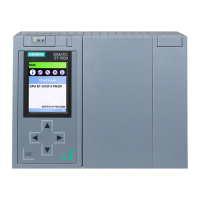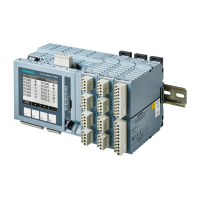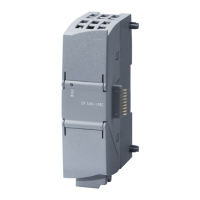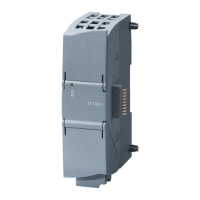Supplementary information
16.6 Communication services
CPU 410-5H Process Automation/CPU 410 SMART
234 System Manual, 10/2013, A5E32631667-AA
Job lengths and parameters for the different types of connection
Table 16- 7 Job lengths and "local_device_id" parameter
"local_device_id" parameter for the connection description
Dev. ID 16#5 for CPU 0
16#0 for CPU 0
Establishing a communication connection
● Use with TCP and ISO on TCP
Both communication partners call FB 65 "TCON" to establish the connection. In the
configuration, you specify which communication partner activates the connection, and
which one responds to the request with a passive connection. To determine the number
of possible connections, refer to your CPU's technical specifications.
The CPU automatically monitors and holds the active connection.
If the connection is broken, for example by line interruption or by the remote
communication partner, the active partner tries to reestablish the connection. You do not
have to call FB 65 "TCON" again.
When FB 66 "TDISCON" is called or the CPU is in STOP operating state, an existing
connection will be terminated. To reestablish the connection you must call FB65 "TCON"
again.
● Use with UDP
Both communication partners call FB 65 "TCON" to set up their local communication
access point. This establishes a connection between the user program and operating
system's communication layer. No connection is established to the remote partner.
The local access point is used to send and receive UDP message frames.
Terminating a communication connection
● Use with TCP and ISO on TCP
FB 66 "TDISCON" disconnects the communication connection between the CPU and a
communication partner.
● Use with UDP
FB 66 "TDISCON" disconnects the local communication access point. This means that
the connection between the user program and communication layer of the operating
system is terminated.
